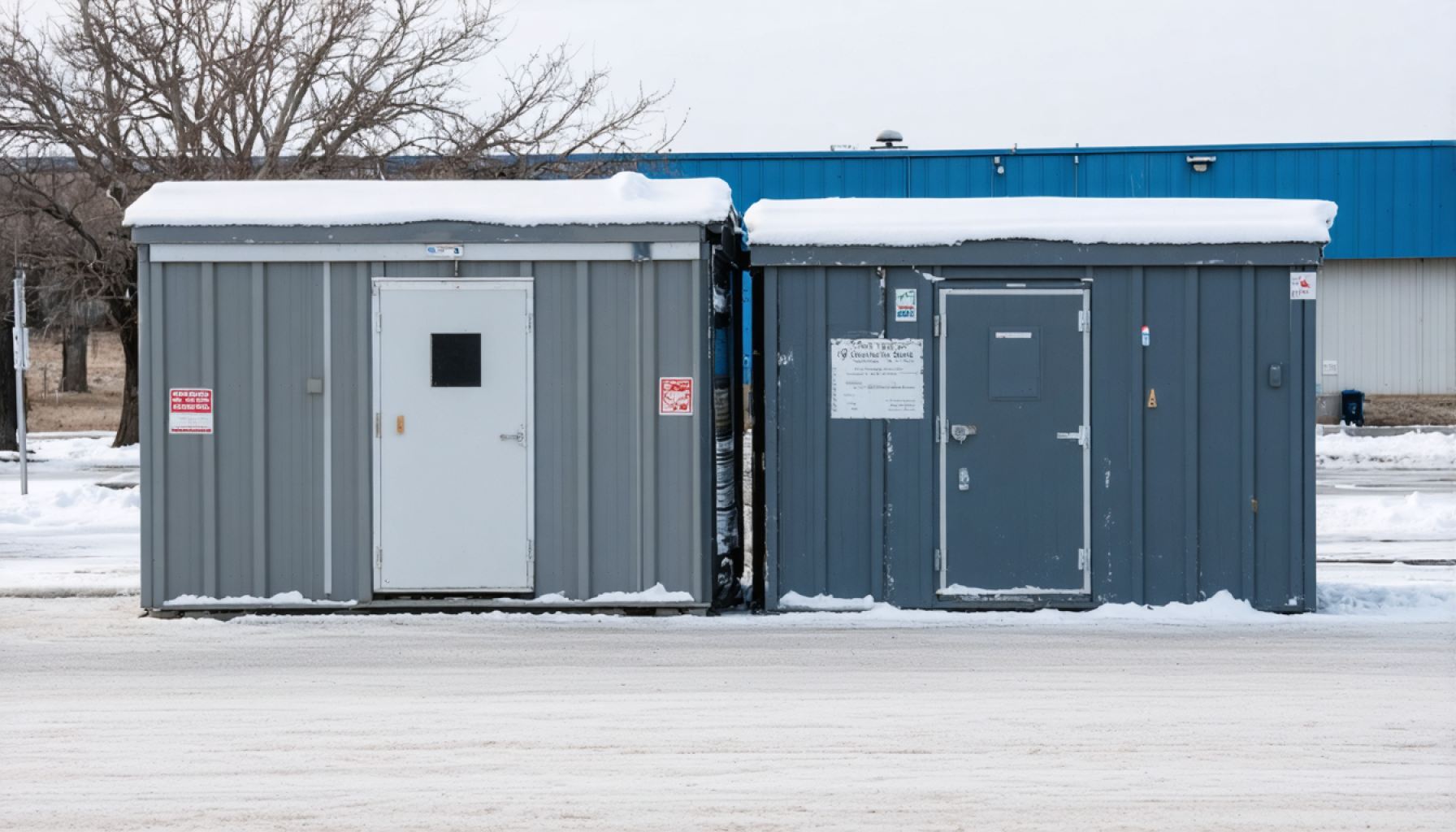- A cold front in North Texas leads to dangerously low wind chills, impacting outdoor activities and community responses.
- Fort Worth schools adjust sports schedules to protect students, prioritizing safety over routine activities.
- Libraries and shelters in Arlington become havens, with volunteers providing warmth and meals to those affected.
- The Salvation Army activates locations across the region, including Dallas and Denton, to support community needs amid the cold.
- Citizens are reminded to winterize homes, focusing on insulation, dripping faucets, and protecting pipes from freezing.
- The community’s unified response highlights resilience and strength, showcasing a spirit of shared determination against harsh weather.
A biting cold front sweeps through North Texas, painting a vivid picture of steely winds and bone-chilling temperatures. As the wind chill threatens to plummet into the teens, communities across the region prepare to offer solace from the winter bite.
In Fort Worth, students see their outdoor games shuffled ardently, hinting at an urgent race against the icy grip of nature. Soccer fields stand eerily quiet, but the initiative to keep young athletes safe resonates warmly through preemptive schedule shifts.
Simultaneously, in Arlington, the hum of activity crescendos as libraries transform into sanctuaries, embracing those seeking refuge. Concurrently, the Salvation Army of North Texas energizes its network, opening doors in the heart of Arlington, Dallas, Denton, and beyond. Each location buzzes with volunteers ready to offer warmth and comfort to those in need.
In these shelters, the scent of hot meals drifts through the air, coupled with the quiet chatter of a community uniting against the elements. The image of a shared meal, a shared space, and a shared resolve paints North Texas not just as a geographical region but a collective spirit steadfast in the face of adversity.
The cold, however, demands more than community spirit. It urges preparedness—tips to winterize homes permeate conversations, emphasizing the value of insulation, the wisdom of dripping faucets, and the vigilance over vulnerable pipes.
This orchestrated response underscores a pivotal message: in the harsh dance of nature’s extremes, resilience thrives in unity. North Texas stands, not just weathered by the storm, but strengthened through shared dedication and warmth in every sense.
Surviving the Freeze: Essential Tips and Tricks for Facing North Texas’s Cold Front
How-To Steps & Life Hacks for Cold Weather Preparedness
1. Winterize Your Home:
– Inspect and Insulate: Check windows and doors for drafts; use weather stripping or caulk to seal leaks. Ensure attic and wall insulation are adequate.
– Pipe Protection: Insulate exposed pipes to prevent freezing. In extreme cold, allow faucets to drip slightly to reduce pressure and prevent bursting.
– Heating System Maintenance: Service your furnace before the cold hits and replace filters regularly to maintain efficiency.
2. Personal Warmth Tips:
– Layered Clothing: Dress in layers to trap heat. Start with moisture-wicking base layers, add insulating layers, and finish with a windproof shell.
– Stay Hydrated and Fed: Cold weather can dehydrate; drink plenty of water. Eating regular, balanced meals helps maintain energy levels.
3. Vehicle Preparation:
– Emergency Kit: Keep an emergency kit with blankets, non-perishable snacks, water, and a flashlight in your car.
– Check Battery and Fluids: Cold weather affects car batteries and fluid levels; ensure your vehicle is winter-ready.
Real-World Use Cases: Community Response and Support
With libraries and shelters transforming into warm havens, community efforts demonstrate practical ways to support those in need during harsh weather. By volunteering at local shelters or donating winter supplies, individuals can contribute to community resilience.
Market Forecasts & Industry Trends
The heightened awareness of extreme weather events boosts demand for sustainable and energy-efficient home products. The home insulation market is projected to grow as consumers seek better solutions against climate extremes. [MarketsandMarkets](https://www.marketsandmarkets.com) reports an increase in smart home technology, including thermostats and energy-efficient systems, as more homes adopt these innovations to manage harsh weather cost-effectively.
Reviews & Comparisons: Insulation and Heating Solutions
Home Insulation:
– Spray Foam Insulation: Offers superior air sealing capabilities but is more expensive. Ideal for difficult-to-reach areas.
– Fiberglass Insulation: Cost-effective and easy to install DIY, but may require more frequent replacement.
Heating Systems:
– Central Heating: Effective for larger homes but can be less efficient in poorly insulated structures.
– Space Heaters: More energy-efficient for small areas but vary significantly in safety and performance.
Controversies & Limitations
While insulating your home is a key step in weather preparedness, incorrect installation can lead to moisture issues and decreased efficiency. It’s crucial to hire a certified professional to get the best results. Also, the energy consumption of heating systems can lead to increased utility bills, requiring careful management.
Security & Sustainability
Ensuring safety during cold fronts includes safeguarding against the risk of carbon monoxide poisoning from heaters. Install carbon monoxide detectors, especially near sleeping areas, and ensure proper ventilation. Solar panels and energy-efficient home improvements can reduce reliance on traditional heating, providing an eco-friendly solution.
Insights & Predictions: Future of Weather Preparedness
As climate change leads to more frequent weather extremes, investments in resilient infrastructure and community planning are vital. Future forecasts suggest a shift towards “smart cities” equipped with technology to efficiently manage resources during weather events.
Pros & Cons Overview
Pros:
– Community response strengthens social bonds.
– Increased awareness and innovation in home insulation and heating.
Cons:
– Potential high costs for winterizing homes.
– Energy consumption spikes during cold weather.
Actionable Recommendations
– Community Involvement: Engage in local support initiatives by donating or volunteering at shelters.
– Home Preparedness: Begin home winterization efforts early in the season.
– Ongoing Education: Stay informed of weather trends and preparedness tips from reliable sources like the National Weather Service.
By adopting these strategies, individuals can protect themselves and their community against the cold front challenges. For more insights into energy-efficient tools and community resources, visit Energy.gov or Ready.gov.
